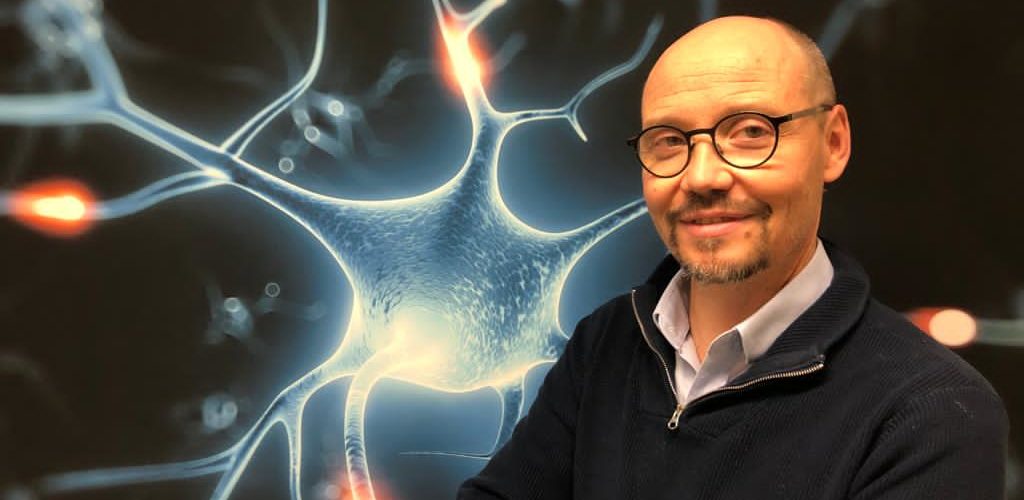A career at the intersection of physics and psychiatry
17 December 2020

Pierre Marquet’s career path has been rather untypical. Combining qualifications in physics and psychiatry-psychotherapy, he is a clinical researcher “par excellence”, engaged for over 20 years in the development of knowledge about the biological dimensions of mental disorders.
His career began at the EPFL where he obtained a Master’s degree in physics (medical engineering) at a time when the technology was just beginning to prove its relevance to the medical field.
Pivotal encounters
Several subsequent encounters influenced both his collaborations and his professional choices. The first of these, with Professor Christian Depeursinge at the EPFL, «a visionary professor» in Pierre’s own words, led him to work on applications in optics to analyse both tissue and cellular material of the brain, the workings of which he found fascinating.
“I pursued medical studies with the intention of working on the brain, all the while continuing my research projects at the EPFL “, which paid for his medical studies and allowed him to stay connected to microscopic imagery research. He then met Professor Pierre Magistretti at the University of Lausanne and convinced him to apply new optics technology to elements of cellular imaging. “He was exceptionally open-minded and immediately found linkages with the neurosciences.” This then led to a MD-PhD with Pierre Magistretti at UNIL/CHUV, while also continuing in the team of Christian Depeursinge at the EPFL. He was well positioned to find linkages between the two, with his two mentors providing advice in their respective areas of expertise.
Opening up new paths
“At the time, digital microscopic holography — a pioneering technique applied to the observation of cellular behaviour — was being developed.” This technique opened a path towards a concept of computational imagery, the construction of digital images, which is particularly well suited for neuronal cells. The articulation with psychiatry and mental disorders came about a dozen or so years ago, when pluripotent stem cells appeared: “my two areas of expertise, with their common denominator in neurosciences, allowed me to investigate”.
Once his MD-PhD was completed, his fascination for the workings of the brain undiminished, and his interest in understanding people and mental pathologies sharpened, pushed him to specialise in psychiatry, and especially psychotherapy. He then began his internship in psychiatry, a move that was greatly facilitated by his retention of a 50% research post in Pierre Magistretti’s lab.
The clinic to give meaning
By 2014 optical imagery applied to the neurosciences became known as neurophotonics. Pierre Marquet was named to the Canada Research Chair for neurophotonics, attached to the University of Laval (ULaval) in Quebec, to apply this imagery to psychiatry. This opportunity gave rise to the creation of an international research unit involving the UNIL, the CHUV and ULaval, “thanks to the support of the Vice-Chancellor François Bussy and Professor Jacques Gasser”.
Currently, with support from Synapsy and in synergy with the research groups within WP#5 (cf. Holography and cellular reprogramming in the quest for biomarkers) Pierre Marquet is working on investigating cellular biomarkers by combining digital holography and stem cell technologies.
Pierre Marquet would not want to have to choose between physics and psychiatry. It is precisely in the nexus of the two that he finds the pertinence of his work. “The discovery of the two principal classes of medication currently used in psychiatry, neuroleptics and antidepressants, was fortuitous” he reminds us. The search for biomarkers will alter this trend. Knowing that mental disorders have a biological component will have an impact on the way patients are cared for and will contribute to reversing the stigma attached to these conditions. Both of these are key concerns at the heart of Synapsy. ●
by Laure Bonnevie
